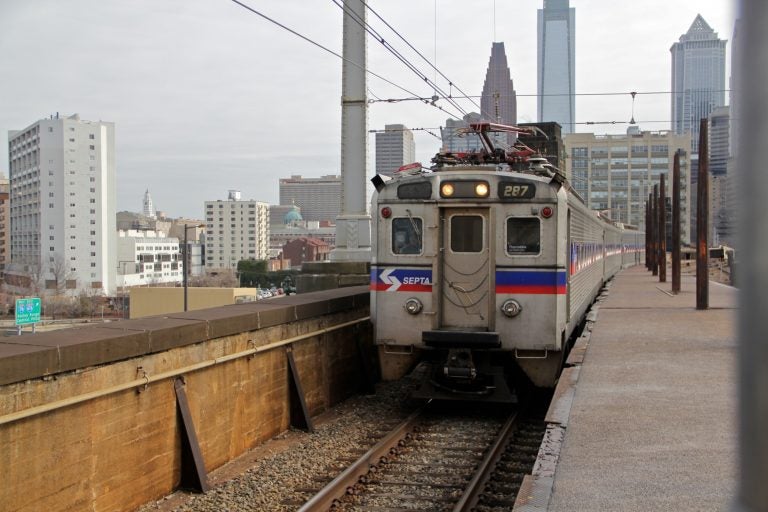SEPTA’s solar-powered train signals expected to improve safety in severe weather
With the new solar technology, SEPTA train engineers should be able to keep Regional Rail lines running safely when the main energy grid goes down.

A train pulling into 30th Street Station. (Emma Lee/WHYY)
This article originally appeared on PlanPhilly.
—
SEPTA is turning to the sun to power Regional Rail.
Sometime in the next year, commuters can expect to see solar panels on the rail signals along the Warminster, Doylestown, and West Trenton Regional Rail lines. Train engineers rely on the signals to provide real-time route information but in severe weather, they often lose power. The knockouts can cause delays, train cancellations and even accidents.
But with the new solar technology, train engineers should be able to keep the rails running safely when the main energy grid goes down.
The solar panels are designed to provide power if the main grid goes down, allowing SEPTA to run on the sun for 48 hours in the case of an outage.
The move is expected to lead to a “significant reduction” of weather-related train snafus, said Erik Johanson, SEPTA’s director of innovation.
It also puts SEPTA ahead of other big-city transit systems in its reliance on solar as a backup power source for rail signal systems.
The $16.2 million rail signal project was one of three solar initiatives approved at a SEPTA board meeting Thursday. The projects will reduce the regional transit system’s energy use, lower greenhouse gas emissions and save money.
“These projects will enhance the services that we provide our customers today, and better prepare us to face future challenges,” said SEPTA general manager Jeffrey Kneuppel. “These projects reflect major strides towards each of these objectives.”
The SEPTA board also approved a plan to retrofit the agency headquarters at 1234 Market Street and purchase power from two solar farms in Pennsylvania.
SEPTA will be the sole recipient of energy coming from the two solar farms in Franklin County under an agreement with Lightsource BP, the San Francisco company that will build and operate them.
The company, which is affiliated with the global energy giant BP, was one of 19 companies to compete for the contract to supply SEPTA with solar power, according to SEPTA. The farms, which are expected to start operating in 2021, will supply 150 jobs.
Unfortunately for Philadelphians looking for work in the growing solar industry, Lightsource BP is building the farms about 163 miles away from the city.
“Those jobs will probably go to the local communities” in Franklin County,” said Johanson.
But the solar power generated at the farms will help SEPTA reduce greenhouse gas emissions by 55,750 metric tons of carbon dioxide annually, according to the authority — equivalent to more than 6 million gallons of gasoline being burned in a year and 15% of SEPTA’s total output of the greenhouse gas.
The agreement between SEPTA and Lighthouse BP will last 20 years with no price increase.
As for their headquarters, SEPTA signed an agreement with Constellation New Energy, an energy supplier, that will allow the agency to upgrade the building to be more energy-efficient at no upfront cost.
“They did an audit of the building and said ‘we can save you $18 million over 17 years and that savings will more than pay for the building improvements,” Johanson said.
The improvements coming to the 45-year-old building include installation of LED lights, lighting controls, new solar controlled electronic window shades, and perimeter weather sealing.
“It’s a whole building retrofit,” Johanson said.
WHYY is your source for fact-based, in-depth journalism and information. As a nonprofit organization, we rely on financial support from readers like you. Please give today.







